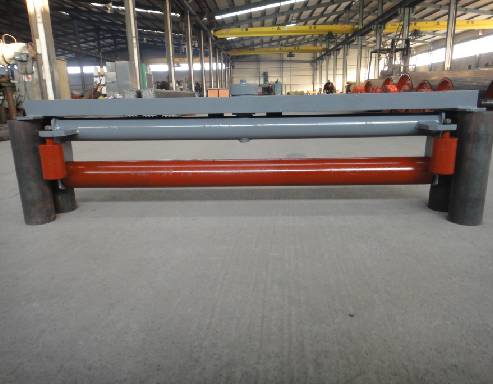 Afrikaans
Afrikaans  Albanian
Albanian  Amharic
Amharic  Arabic
Arabic  Armenian
Armenian  Azerbaijani
Azerbaijani  Basque
Basque  Belarusian
Belarusian  Bengali
Bengali  Bosnian
Bosnian  Bulgarian
Bulgarian  Catalan
Catalan  Cebuano
Cebuano  Corsican
Corsican  Croatian
Croatian  Czech
Czech  Danish
Danish  Dutch
Dutch  English
English  Esperanto
Esperanto  Estonian
Estonian  Finnish
Finnish  French
French  Frisian
Frisian  Galician
Galician  Georgian
Georgian  German
German  Greek
Greek  Gujarati
Gujarati  Haitian Creole
Haitian Creole  hausa
hausa  hawaiian
hawaiian  Hebrew
Hebrew  Hindi
Hindi  Miao
Miao  Hungarian
Hungarian  Icelandic
Icelandic  igbo
igbo  Indonesian
Indonesian  irish
irish  Italian
Italian  Japanese
Japanese  Javanese
Javanese  Kannada
Kannada  kazakh
kazakh  Khmer
Khmer  Rwandese
Rwandese  Korean
Korean  Kurdish
Kurdish  Kyrgyz
Kyrgyz  Lao
Lao  Latin
Latin  Latvian
Latvian  Lithuanian
Lithuanian  Luxembourgish
Luxembourgish  Macedonian
Macedonian  Malgashi
Malgashi  Malay
Malay  Malayalam
Malayalam  Maltese
Maltese  Maori
Maori  Marathi
Marathi  Mongolian
Mongolian  Myanmar
Myanmar  Nepali
Nepali  Norwegian
Norwegian  Norwegian
Norwegian  Occitan
Occitan  Pashto
Pashto  Persian
Persian  Polish
Polish  Portuguese
Portuguese  Punjabi
Punjabi  Romanian
Romanian  Russian
Russian  Samoan
Samoan  Scottish Gaelic
Scottish Gaelic  Serbian
Serbian  Sesotho
Sesotho  Shona
Shona  Sindhi
Sindhi  Sinhala
Sinhala  Slovak
Slovak  Slovenian
Slovenian  Somali
Somali  Spanish
Spanish  Sundanese
Sundanese  Swahili
Swahili  Swedish
Swedish  Tagalog
Tagalog  Tajik
Tajik  Tamil
Tamil  Tatar
Tatar  Telugu
Telugu  Thai
Thai  Turkish
Turkish  Turkmen
Turkmen  Ukrainian
Ukrainian  Urdu
Urdu  Uighur
Uighur  Uzbek
Uzbek  Vietnamese
Vietnamese  Welsh
Welsh  Bantu
Bantu  Yiddish
Yiddish  Yoruba
Yoruba  Zulu
Zulu Exploring the Impact of Carry Idler on Overall System Efficiency and Performance Metrics
The Significance of Carry Idler in Mechanical Systems
In the realm of mechanical engineering, the efficient transmission of power and motion is crucial for the functioning of various machines and systems. One often overlooked yet essential component in this domain is the carry idler. This mechanism plays a critical role in ensuring smooth operation, reducing wear and tear, and enhancing the overall reliability of mechanical systems.
A carry idler is a type of idler pulley that is used to maintain tension in a belt or chain drive system. Unlike guide pulleys that mainly direct the path of the belt or chain, carry idlers contribute to the dynamic characteristics of the drive, ensuring that the load is adequately supported and transmitted. The primary function of a carry idler is to facilitate the continuous motion of a belt or chain while sustaining the physical load it bears. This aspect is particularly critical in applications such as conveyor systems, where consistency and reliability are paramount.
In conveyor systems, for instance, carry idlers help in distributing the weight of the material being transported, preventing excessive sagging or bending of the belt
. This distribution is essential not only for maintaining the efficiency of the system but also for prolonging the lifespan of the belt itself. Without proper support from carry idlers, belts can experience premature wear, leading to operational failures that can cause downtime and costly repairs.carry idler

Another significant advantage of using carry idlers is that they contribute to the reduction of friction in moving parts. By maintaining proper tension in the belt or chain, carry idlers help minimize slippage and energy loss. This efficiency is critical in power transmission systems, where even minor slippage can result in significant performance degradation. The reduced friction also leads to lower energy consumption, making the entire system more economical over time.
Moreover, carry idlers can be designed to accommodate different operational environments. They can be constructed from various materials, such as rubber, plastic, or metal, depending on the application requirements. For instance, in environments exposed to corrosive materials or extreme temperatures, specialized materials may be employed to enhance durability and maintain performance. The adaptability of carry idlers ensures that they can be integrated into a wide range of machinery, from simple assembly lines to complex industrial processing plants.
Maintenance is another critical aspect related to carry idlers. Regular inspection and upkeep can prevent potential issues, such as misalignment, which can lead to accelerated wear of belts and pulleys. Proper maintenance schedules should incorporate checks on the carry idlers to ensure they are functioning optimally. This vigilance not only enhances system reliability but also contributes to safety, as failing components can lead to more significant mechanical failures.
In conclusion, the carry idler plays an indispensable role in the performance and efficiency of mechanical systems. Its primary function of maintaining belt or chain tension, coupled with its ability to reduce friction and distribute loads, makes it a critical component in various applications. By understanding the importance of carry idlers and incorporating them effectively into mechanical designs, engineers can enhance the reliability of their systems, reduce operational costs, and improve overall efficiency. As technology continues to advance, the evolution of carry idler designs will undoubtedly play a crucial role in the development of more sophisticated and efficient mechanical systems in the future.
-
Revolutionizing Conveyor Reliability with Advanced Rubber Lagging PulleysNewsJul.22,2025
-
Powering Precision and Durability with Expert Manufacturers of Conveyor ComponentsNewsJul.22,2025
-
Optimizing Conveyor Systems with Advanced Conveyor AccessoriesNewsJul.22,2025
-
Maximize Conveyor Efficiency with Quality Conveyor Idler PulleysNewsJul.22,2025
-
Future-Proof Your Conveyor System with High-Performance Polyurethane RollerNewsJul.22,2025
-
Driving Efficiency Forward with Quality Idlers and RollersNewsJul.22,2025





























